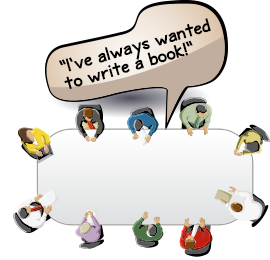Writing in general can be a tough business; writing for children is even tougher. Writing for children has its own unique tricks, processes, and rules; one of those rules is using words that are age appropriate.
Writing For Children vs. General Writing
How this differs from writing in general is that the children’s writing arena is divided into specific age groups. There are picture books and rebus stories for the very young child. The story line and text are simple; they need to tell a story including basic conflict and action, but they are geared toward the comprehension of young children.
Next comes early readers. Again, the words used and plot are relatively simple to help the child learn to read. The next genre is chapter books. Here the plot and words grow just like the child has. The story can be more involved and geared to hold the child’s attention with mild mystery, suspense, and fantasy.
Then it’s on to middle grade. At this point, the child has grown and has greater comprehension and vocabulary, so should the stories for them. The plot and conflict can be more complex than the earlier chapter books.
Finally, it’s on to young adult. This genre’s stories can be sophisticated and involved enough to attract adult readership. But, it obviously should still be written avoiding hard core subject matter. While it can deal with just about all topics, it should be void explicit adult context. Writing for adults is simpler; the writer usually writes with the vocabulary he/she is use to.
The question is: How does a writer know which words are specific to a particular age group? Unless you are an experienced writer and have become very familiar with the different age group vocabularies, you will need help in this area.
Three Sources/Tools for Finding Age Appropriate Words
1. A source that I’ve found very useful is Children’s Writers Word Book, 2nd Edition, by Alijandra Mogilner and Tayopa Mogilner. It lists specific words that are introduced at seven key reading levels (kindergarten through sixth grade). It provides a thesaurus of those words with synonyms, annotated with reading levels. In addition, it offers detailed guidelines for sentence length, word usage, and themes at each reading level. I find it a valuable tool in my writing toolbelt.
2. Another great source is Intervention Central ( http://www.interventioncentral.org/htmdocs/tools/okapi/okapi.php ) which utilizes Spache and Dale formulas. This is an amazing site that allows you to input up to 200 words, choose a readability formula (what grade level you are writing for), and click for the results. The program, OKAPI (an internet application for creating curriculum-based assessment reading probes) will return a readability analysis of your text, indicating what grade level the particular content is appropriate for.
3. Next is Englishraven.com ( [http://www.englishraven.com] ). This site provides Dolch (sight word listed for frequency and importance) wordlists for each grade level. The lists are limited, but it does give a good indication of appropriate words for the particular age group you are writing for.
All three of these resources are useful in finding just the right words for the children’s writer. There are also other books and sites available that will help you in your search for those age appropriate words for your children’s book, just do a search.
About the Author:
If you need hands-on help, DKV Writing 4 U ( http://dkvwriting4u.com ) is a writing service that is professional and affordable. It offers guidance, proofreading, basic editing, and critiquing of your children’s manuscript. It also provides two FREE e-books, Writing, Publishing, and Marketing – You Can Do It! and Power of Article Marketing, just for subscribing. There’s also a gift just for visiting! The free gifts change periodically.



